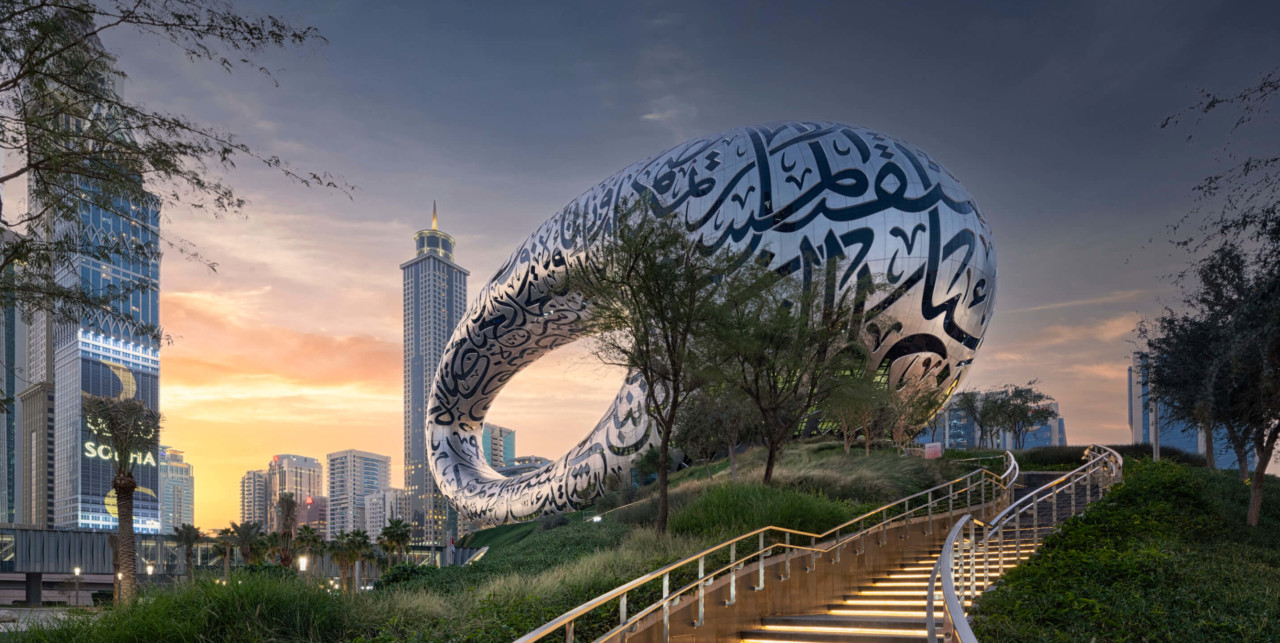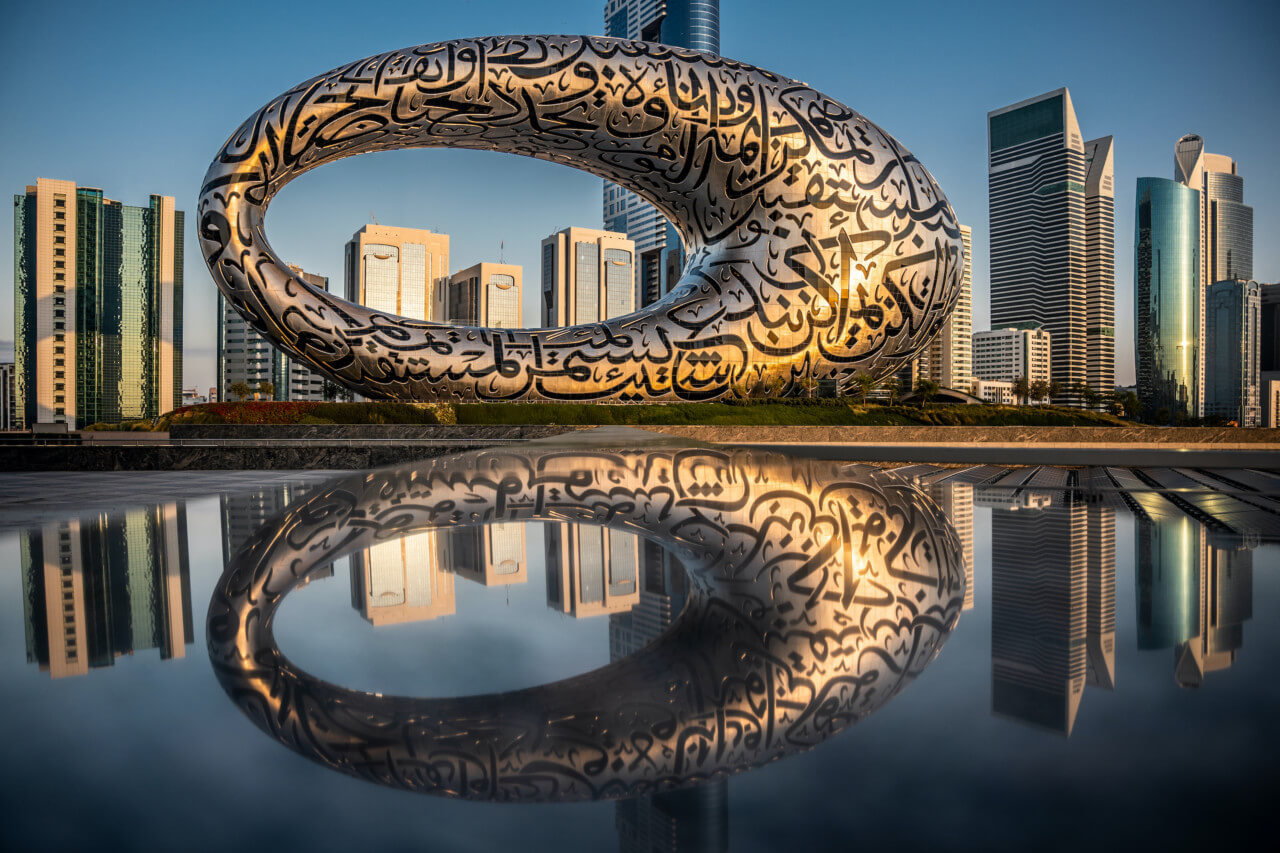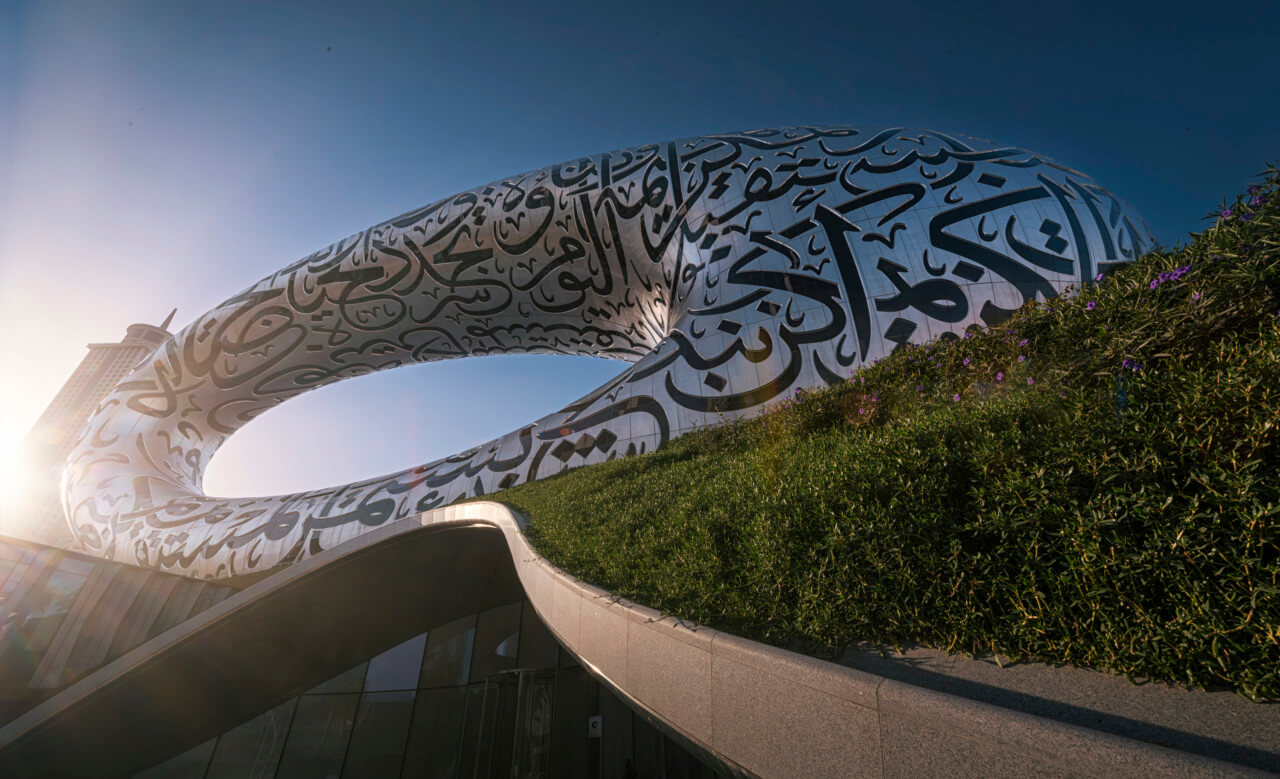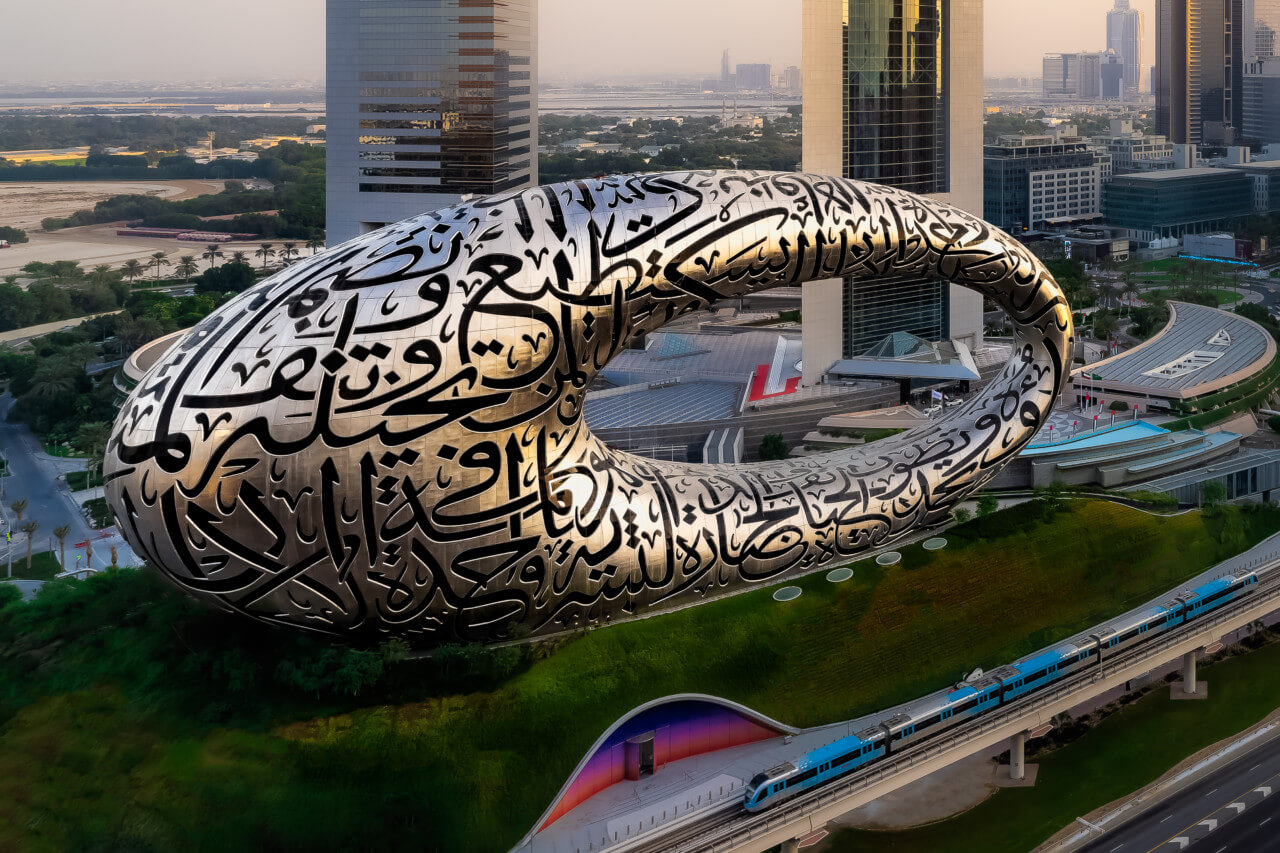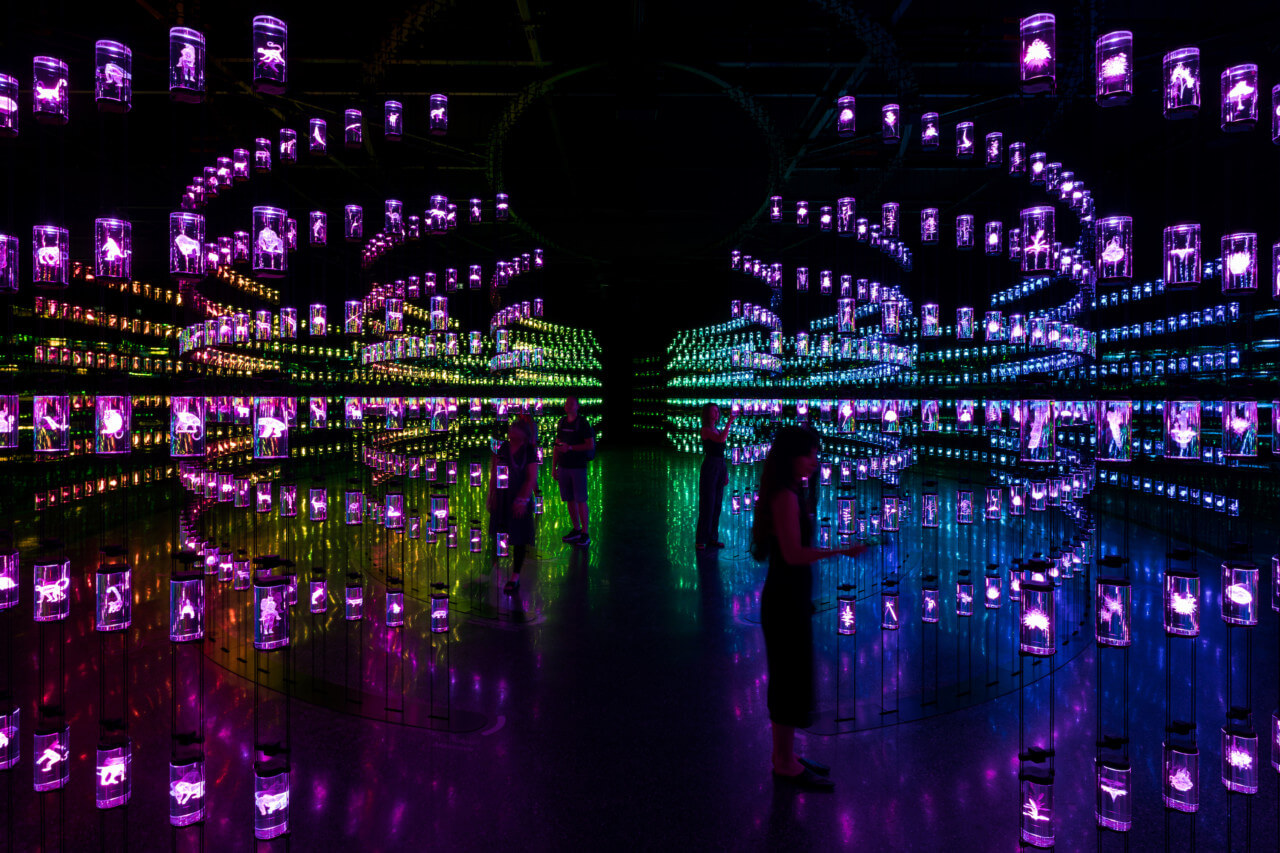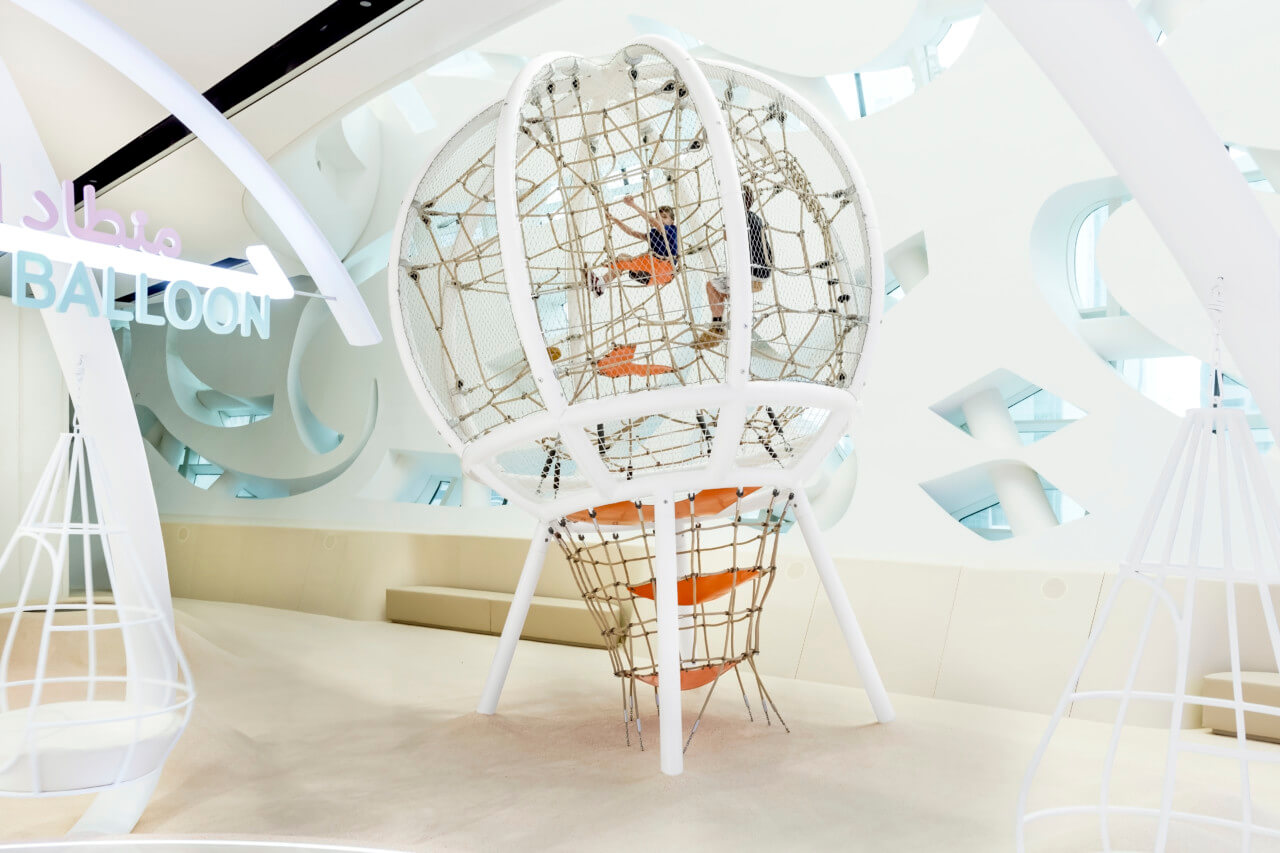The Dubai Future Foundation’s long-awaited Museum of the Future, a “new global centre for future thinking, technologies, and innovation” housed within a 252-foot-tall toroidal structure, is finally open in the heart of the city’s Financial District. Rising seven stories above Dubai’s skyscraper-lined main artery, the Paul Bunyan-sized pinky ring with sheik-penned verse inscribed into its metallic, windowless facade has been bestowed with a bit of a boost in the height department thanks to its perch atop a grassy manmade knoll that also adds a splash of green to the area around the Emirates Towers complex.
Sheikh Mohammed Bin Rashid Al Maktoum, ruler of Dubai and Vice President and Prime Minister of the United Arab Emirates, first formally announced plans for the futuristic facility in 2015; parent organization and governmental technology incubator the Dubai Future Foundation launched the following year. Since its inception, the museum has staged a handful of temporary exhibitions while design and construction work on its permanent home was underway. Spanning nearly 323,000 square feet, the hulking stainless steel structure with its impossible-to-miss elliptical void was designed by Killa Design, a Dubai-based architectural studio led by Shaun Killa, in close collaboration with British-headquartered engineering firm Buro Happold to be a new “architectural and cultural icon” for Dubai.
Ahead of its February 22 inauguration, the $136 million museum was being touted locally as “the most beautiful building in the world.”
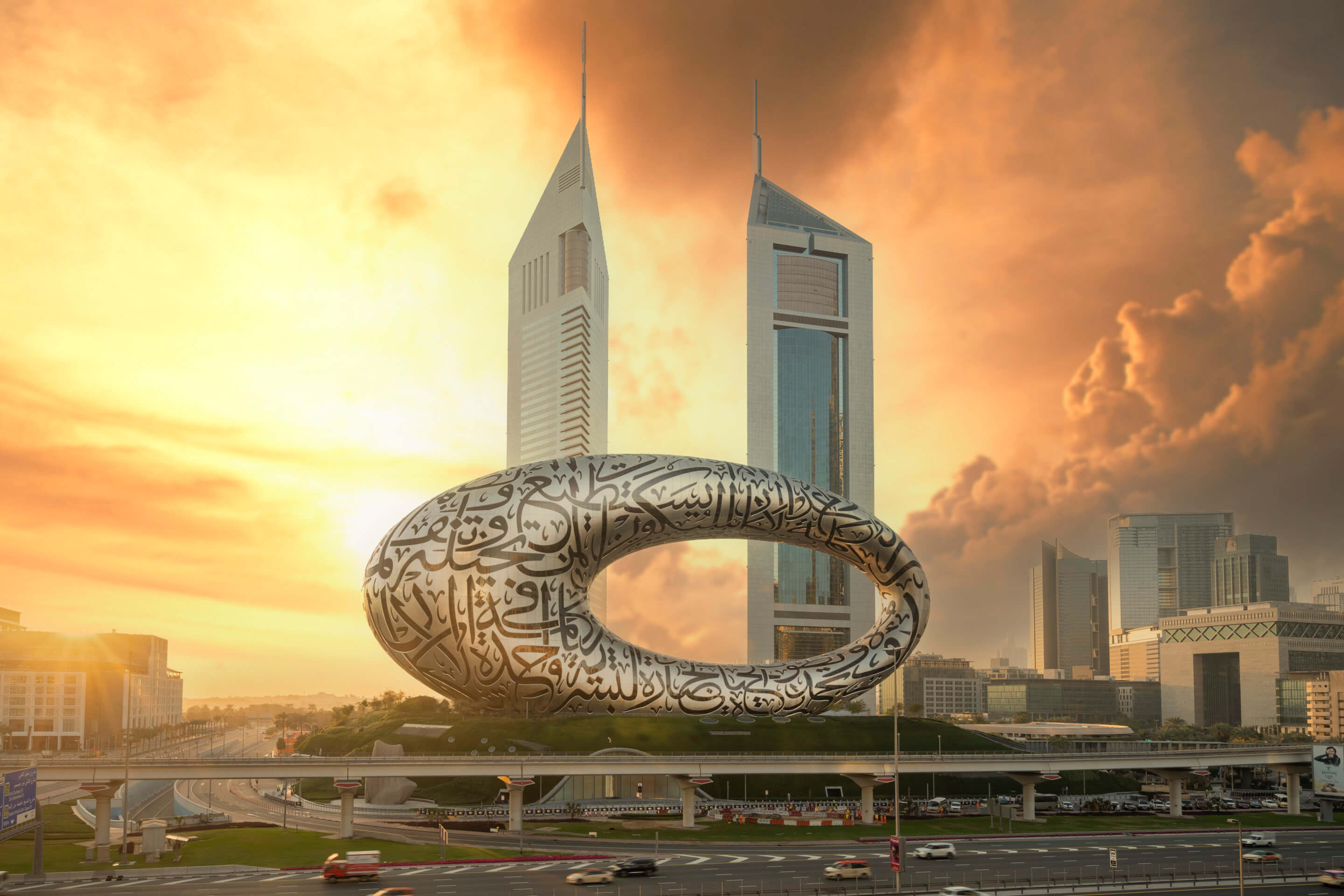
In a statement, Sheikh Mohammed referred to The Museum of the Future as “a message of hope … a global scientific platform … and an integrated institutional framework to shape a better future for all of us.”
Powered by a dedicated solar park, the LEED Platinum-certified museum complex is divided into three core elements: the aforementioned hill, the exterior of the circular building (detailed below) that sits atop it, and the exhibitions housed within the museum. The museum is accessible via two bridges, one extending from the neighboring Jumeirah Emirates Towers, a 56-story luxury hotel, and the other connecting it to the nearby Emirates Towers metro station.
As detailed in a press release announcing The Museum of the Future’s opening, the column-free structure is being heralded as an unprecedented feat of computer-aided engineering and parametric design created through “an algorithmic design process that supports complex geometries, and innovative use of Building Information Modelling (BIM).” Comprised of 1,024 unique composite panels created through a painstaking 16-step layering process, the facade itself took 18 months to realize with the aid of specialized robotic arms. (Autodesk’s Revit BIM software played a key role in the building’s design.)
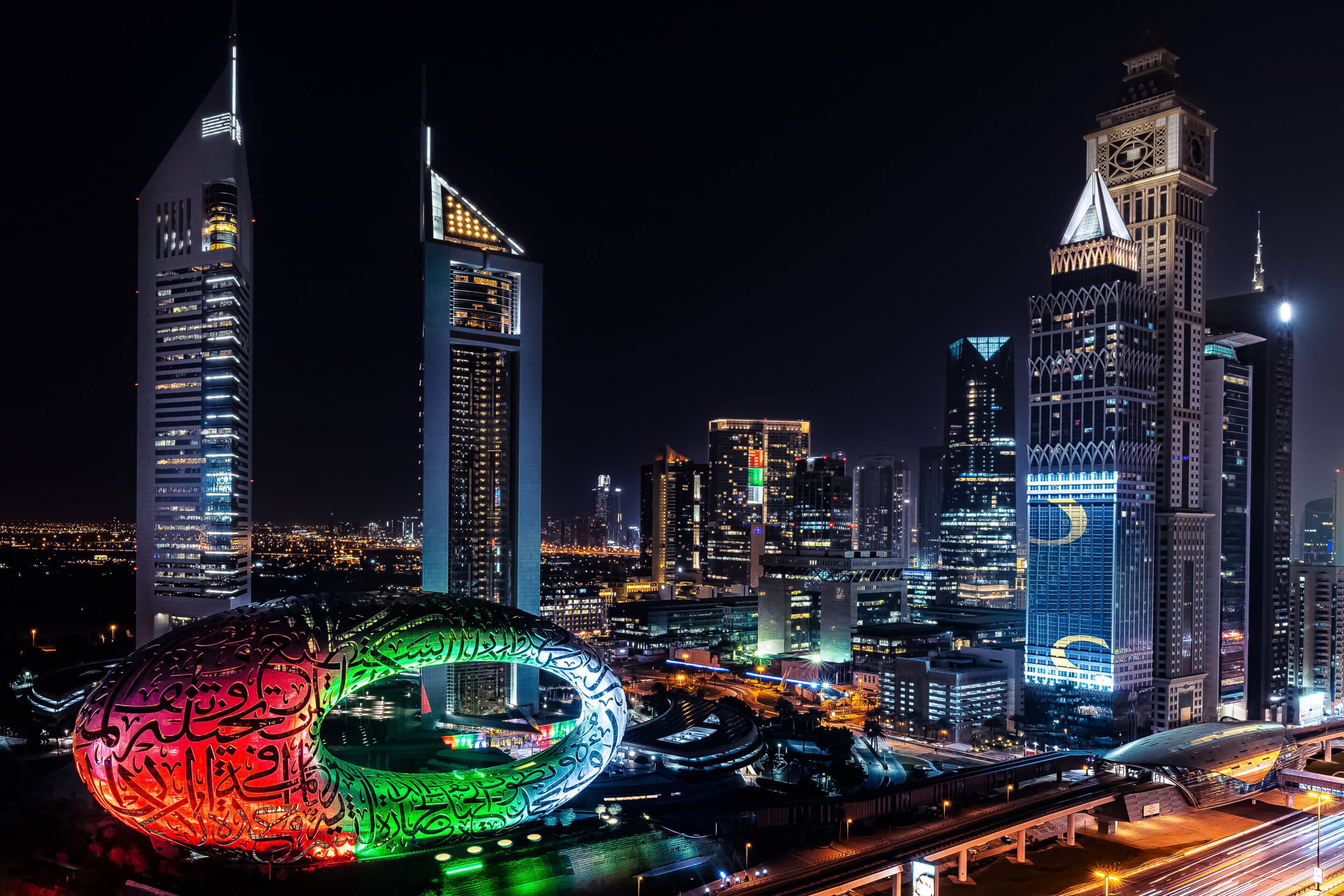
At night, the facade of the Museum of the Future comes alive thanks to the nearly 46,000 feet of LED light lines tracing the Arabic calligraphy that covers the entirety of the edifice. Realized by Emirati artist Mattar bin Lahej, the words blanketing the building, belong to Dubai’s ruler himself, who provided the Dubai Future Institute with a trio of short musings on the future:
- “We may not live for hundreds of years, but the products of our creativity can leave a legacy long after we are gone;”
- “The future belongs to those who can imagine it, design it, and execute it. It isn’t something you await, but rather create;”
- “Innovation is not an intellectual luxury. It is the secret behind the evolution and rejuvenation of nations and people.”
Colossal calligraphy aside, inside the Museum of the Future, visitors will find a sprawling, multi-purpose hall that can accommodate up to 1,000 people, a more intimate hall for interactive lectures and workshops, and a suite of “innovation laboratories” for “health, education, smart cities, energy, and transportation.” Spread across five of the building’s seven stories are a variety of experiential displays and immersive installations including a three-part permanent exhibition, dubbed Journey of the Pioneers, conceived and executed by the Stuttgart, Germany-based exhibition design studio ATELIER BRÜCKNER.
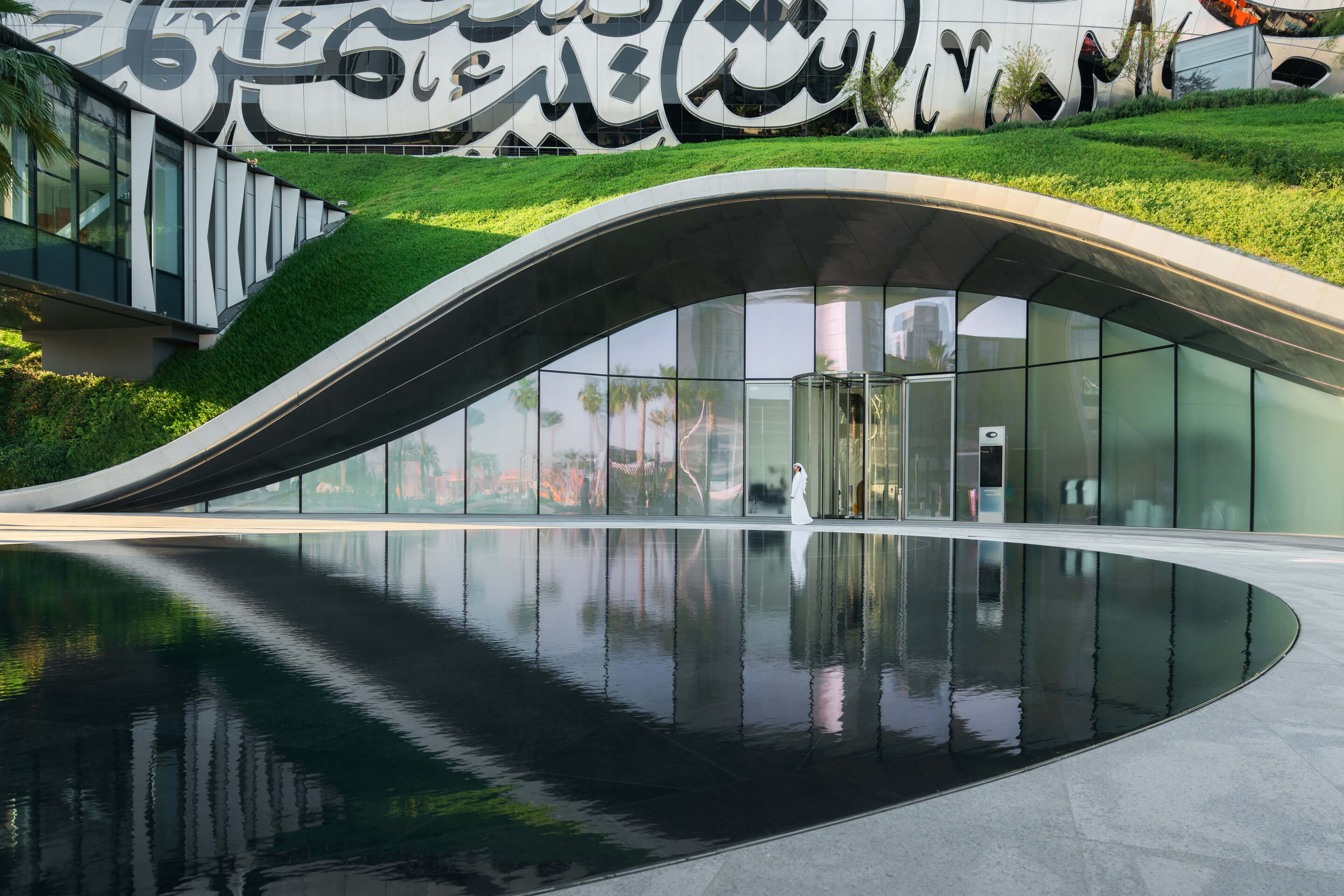
Journey of the Pioneers is comprised of the OSS Hope, a space station replication described as a “display of humanity’s home in space, where guests will play out their own story, joining its community and learning about what life could potentially be like aboard a huge space station in 2071;” the Heal Institute, which invites visitors to step inside a rainforest ecosystem simulator to “help them better understand nature and their responsibility towards it as we face environmental change,” and Al Waha, (“The Oasis”) a mesmeric experience described as an opportunity for visitors to explore themselves in a world that stimulates their senses, by “embarking on a private journey in an environment centered on health and well-being, detached from technology, allowing them to meditate, reconnect with themselves and restore their natural balance.”
Another permanent exhibition, Tomorrow Today, has been realized as an ever-evolving, World’s Fair-esque space of over 50 individual exhibits that showcase forward-thinking products and prototypes focused on waste management, environment, food security, agriculture and irrigation, and city planning.
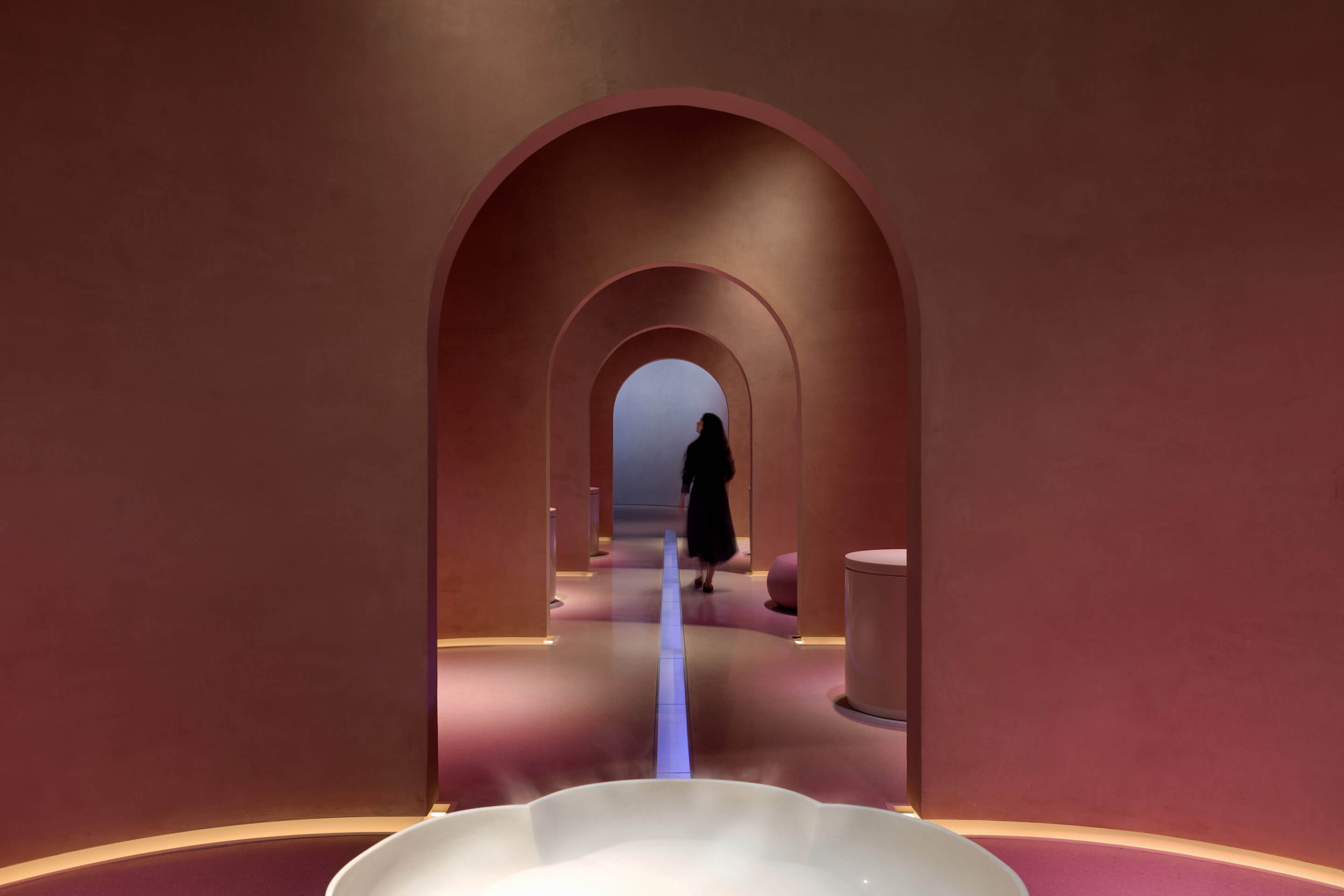
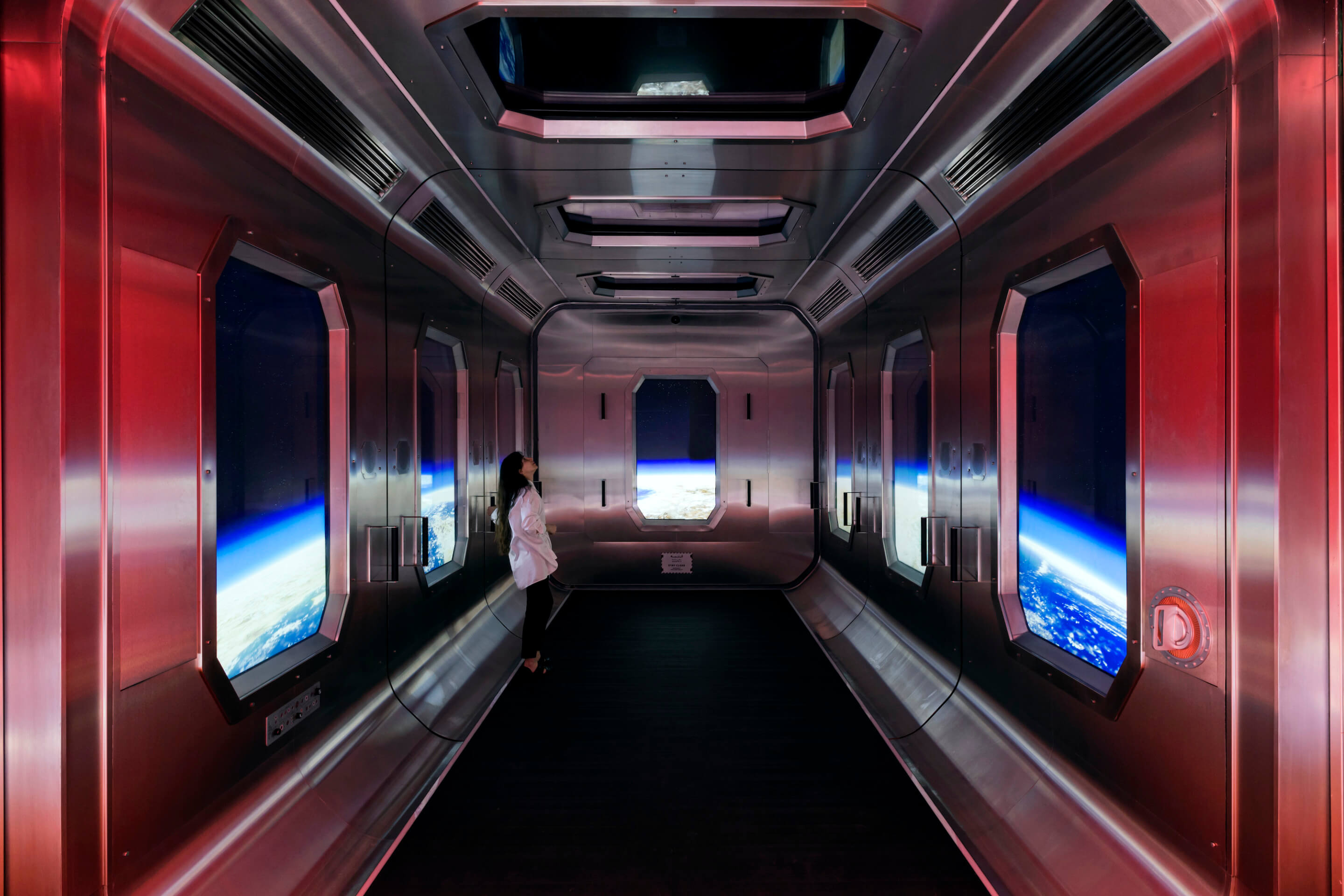
Last but not least is Future Heroes, a ground-level public exhibition, also designed by ATELIER BRÜCKNER, that takes the form of a children’s play space where pint-sized visitors are encouraged to “make new discoveries about themselves and the world around them” across three main experience areas: Imagine, Design, and Build.
In a statement, Sheikh Hamdan bin Mohammed bin Rashid Al Maktoum, the Crown Prince of Dubai and Chairman of the Board of Trustees at Dubai Future Foundation, noted that the new museum “will be an intellectual laboratory for cities of the future and governments of the future,” while playing “a key role in strengthening Dubai’s future position.”
“The Museum is a centre for us to define our human future,” added Khalfan Belhoul, CEO of the Dubai Future Foundation. “The whole structure represents humanity and stands upon a green hill, characterising the Earth, and the space at its core signifies a future yet to be discovered. It is the gateway to our future world.”
Curious visitors, however, may have to practice a bit of patience before experiencing Dubai’s gateway to the future world themselves. As of this writing, museum tickets (entry costs for visitors over the age of three are roughly $39.50 per person) have completely sold out through the end of this month. The opening of The Museum of the Future also dovetails with the ongoing Expo 2020 Dubai, which concludes at the end of March.






